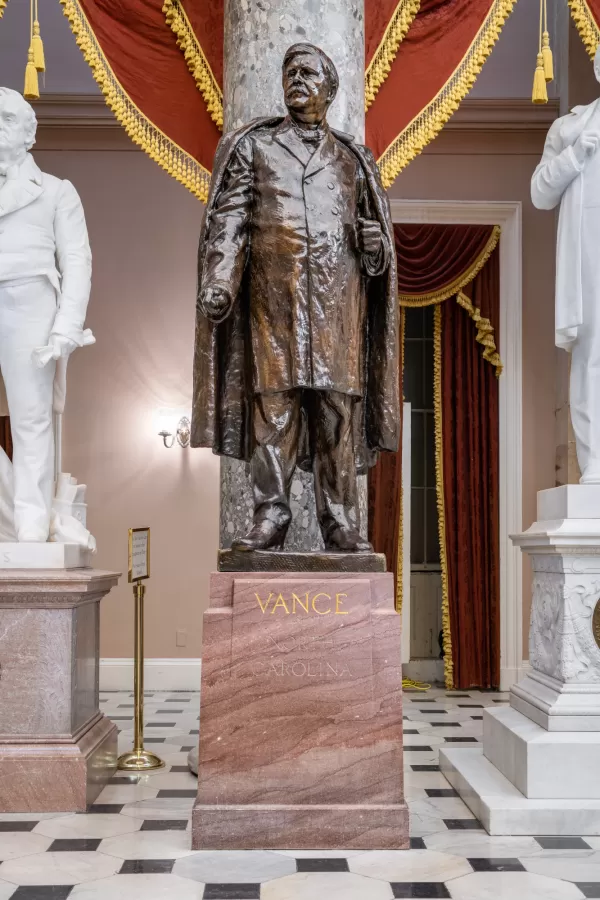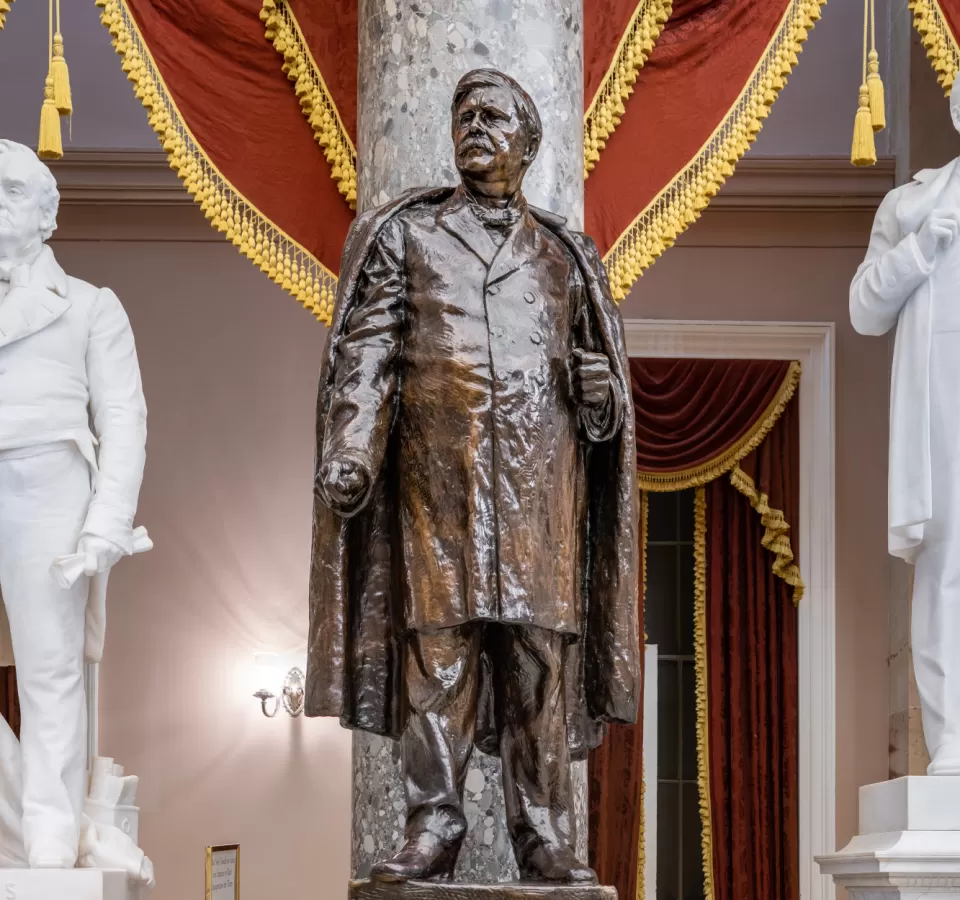This statue of Zebulon Vance was given to the National Statuary Hall Collection by North Carolina in 1916.
Zebulon Vance was born on May 13, 1830, in Buncombe County, North Carolina. Forced to withdraw from college in 1844 when his father died, he later studied law at the University of North Carolina from 1851 to 1852. He received his county court license, settled in Asheville, and was soon elected county solicitor. He served in the North Carolina House of Commons in 1854 and in the U.S. House of Representatives from 1858 to 1861. Though he supported the constitutionality of secession, he was an ardent Unionist, not favoring secession until President Lincoln called for troops in 1861. He then organized and served with the Rough and Ready Guards.
Elected governor in 1862, he worked during the war to insure legality in the harsh conscription practices of the Confederacy and to guarantee protection of the law to North Carolinians. After being arrested at the end of the war and being briefly imprisoned, he returned to his law practice. Though elected to the Senate in 1870, he could not serve because he had not yet been pardoned. As governor from 1877 to 1879, he worked to revive the state's economy, agriculture, and industry and to improve schools.
From 1879 until his death he served in the U.S. Senate, where he was a popular and effective mediator between North and South. Hard work undermined his health and led to the loss of one eye. He died in Washington, D.C., on April 14, 1894, and after services in the Senate Chamber was buried in Asheville, North Carolina.
Artist
Gutzon Borglum (1867–1941) is best known for his colossal sculptures of the heads of Presidents George Washington, Thomas Jefferson, Abraham Lincoln and Theodore Roosevelt at Mount Rushmore, South Dakota. Born near Bear Lake in the Idaho Territory, he left home for San Francisco at the age of 12 and was apprenticed to a lithographer and then a fresco painter. He lived next in New York and subsequently in Paris, where he became a close friend of the sculptor Auguste Rodin; Spain; San Francisco; and London. He settled in New York City in 1901. Many of Borglum's works are large-scale public monuments. His first colossal-scale work, a memorial to the Confederate Army at Stone Mountain, Georgia, was halted by controversy. He began work at Mount Rushmore in 1927; the sculpture there was completed after his death by his son, Lincoln.
Borglum's other works in the Capitol are a bust of Abraham Lincoln and the Alexander Hamilton Stephens statue (Georgia, 1927), which is also in the National Statuary Hall Collection.

